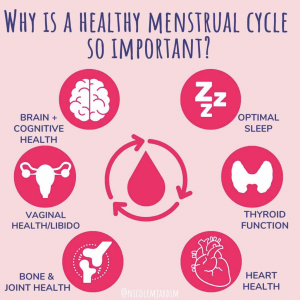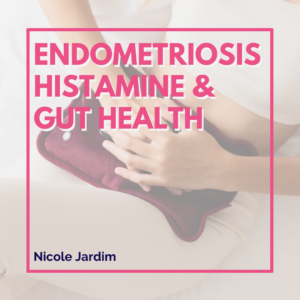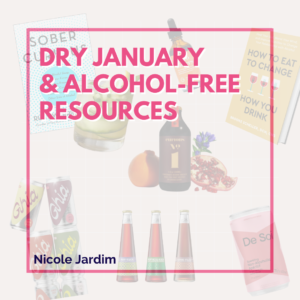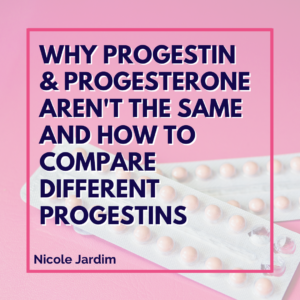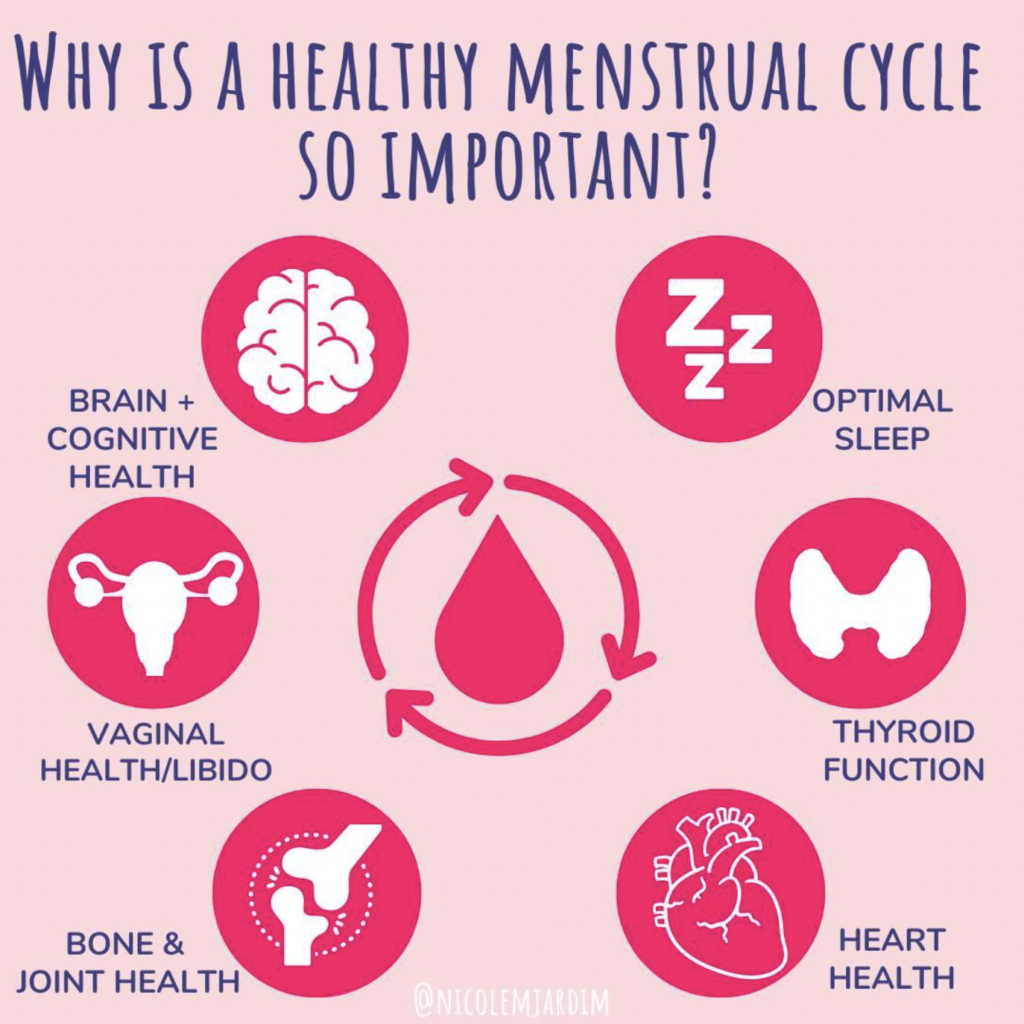
2023 PERIODS 101 Series @NicoleMJardim
PART 1 – WHY IS MY PERIOD SO IMPORTANT, ANYWAY? 🤔
Okay y’all, let’s get back to basics. This is the first post in my series – PERIODS 101!
👍🏼 Like it, save it, send it to your friends!
In those TV medical dramas, you’ll hear doctors and nurses say things like, “We have to monitor the patient’s vitals!”
What they mean is they have to make sure the patient’s heart rate, respiratory rate, blood pressure, & body temperature (the four vital signs) are within the healthy range for them to stay alive.
Well, your period is also a vital sign – of your overall health!🩸
Back in 2005, the Society for Menstrual Cycle Research cosponsored a scientific forum called “The Menstrual Cycle Is a Vital Sign.”
Then in 2015, the American College of Obstetricians & Gynecologists released a report that acknowledged this very same fact.
Furthermore, in a study titled ‘Ovulation, A Sign of Health’, researchers agreed with the above sentiment and stated:
“Accordingly, normal ovulatory activity during reproductive years can be considered a sign of health, because it implies adequate endocrine and gonadal function.”🙌🏼
They argued that ovulation abnormalities & irregular cycles may point to some serious health problems and could be “associated with lifestyle, stress, endocrine, gynecological, autoimmune, nutritional, genetic, and iatrogenic disorders.”
In a nutshell 🥜, estrogen and progesterone from ovulation support a whole mixed bag of great stuff:
🧠 Brain health + cognitive function
😴 Sleep regulation
🦴 Bone density
❤ Heart & cardiovascular health
🐚 Vaginal, breast and uterine health
👩🏻🦱 Skin health
Yup, our menstrual cycle is a barometer of our overall health! 🤯
It’s communicating to us via symptoms that something might not be right. If you’re having problems with your period then it is time to start paying attention.
WHAT TO DO NOW? ✍👇
🩸Take my Period Quiz
🎧 Sign up for the Fix Your Period Collective Waitlist (my new membership coming v soon).
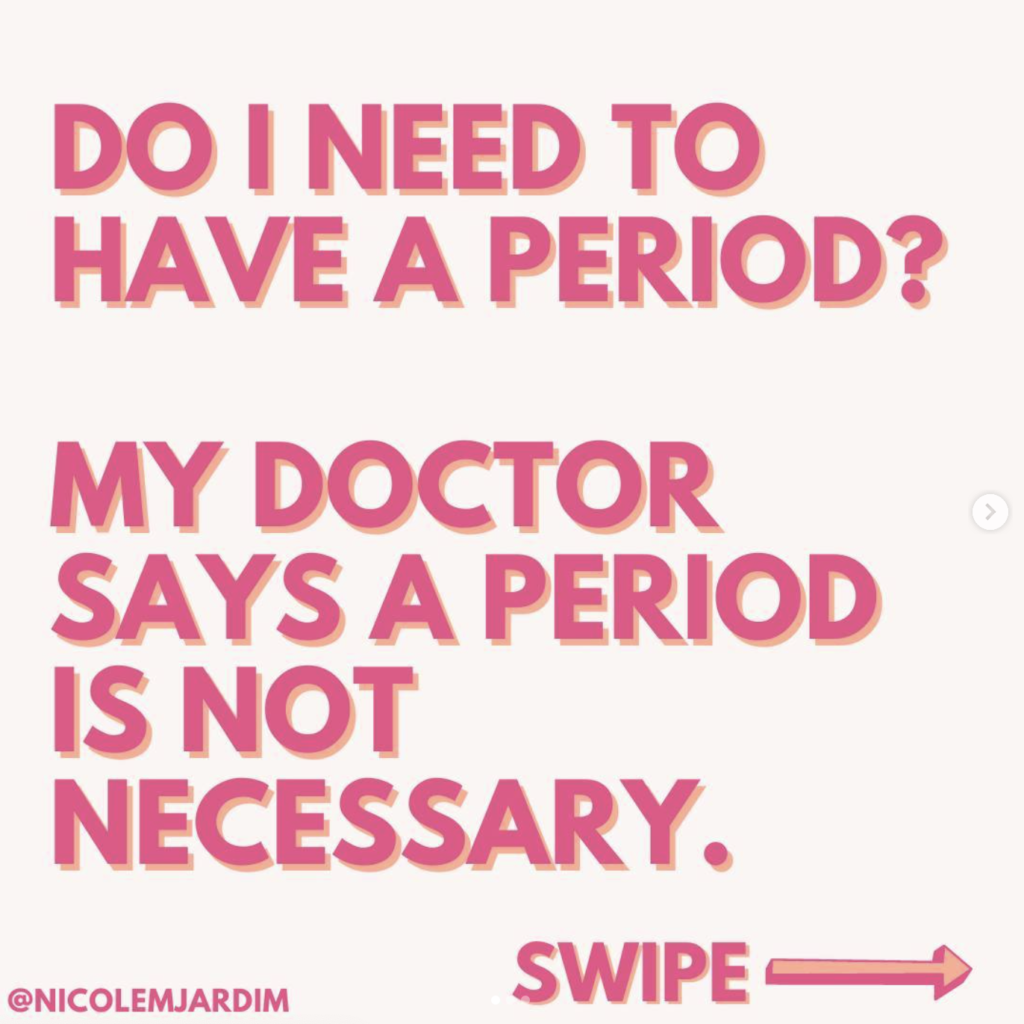

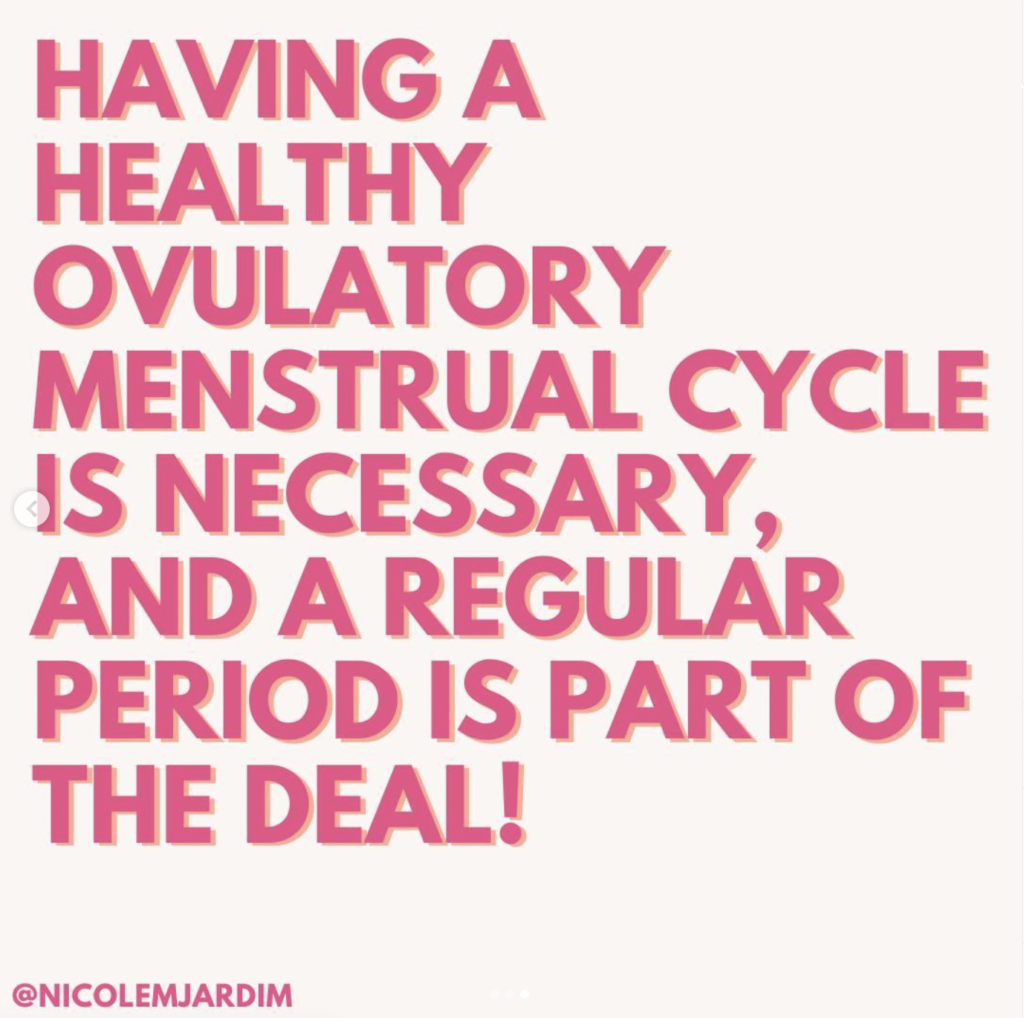
PART 2 – DO I NEED TO HAVE A PERIOD?
“Why do so many doctors maintain that we don’t need to have a period?”
I hear this story over and over, time and time again. Women are constantly telling me that they’ve been fed this mistruth by the media, doctors and health professionals.
Yup, you’ve probably heard that having a period is not necessary.
I’ll never forget seeing those ads back in the day for Seasonique, an extended-cycle birth control pill that gives you four periods a year, and thinking there was something wrong with that picture. 😱
I don’t know about you, but no matter how far we’ve come in the field of medicine, I just can’t wrap my head around the idea that artificially suppressing your period for months/years at a time is a good idea!
“But, Nicole, my doctor says it’s fine, and I’ve read articles written by other doctors that tell me it’s totally okay, too.”
Well, I’m here to tell you that I 100% disagree!
Having a healthy ovulatory menstrual cycle is necessary, and a regular period is part of the deal! 🩸🩸
Why?
Because you don’t get a period without ovulation. And your period can tell you there’s a problem long before you know there’s a problem.
See PART 1 – yesterday’s post.
In other words, don’t ignore your period problems. Oh, and don’t let your medical professional dismiss them either! 👊🏽
WHAT TO DO NOW? ✍👇
🩸 Take my Period Quiz at nicolejardim.com/quiz
📖 Grab my book Fix Your Period for all the Periods 101 info you could want (chapter 1!)
🎧 Listen to my Periods 101 episode of the Period Party podcast (🔍️ at nicolejardim.com/podcasts)
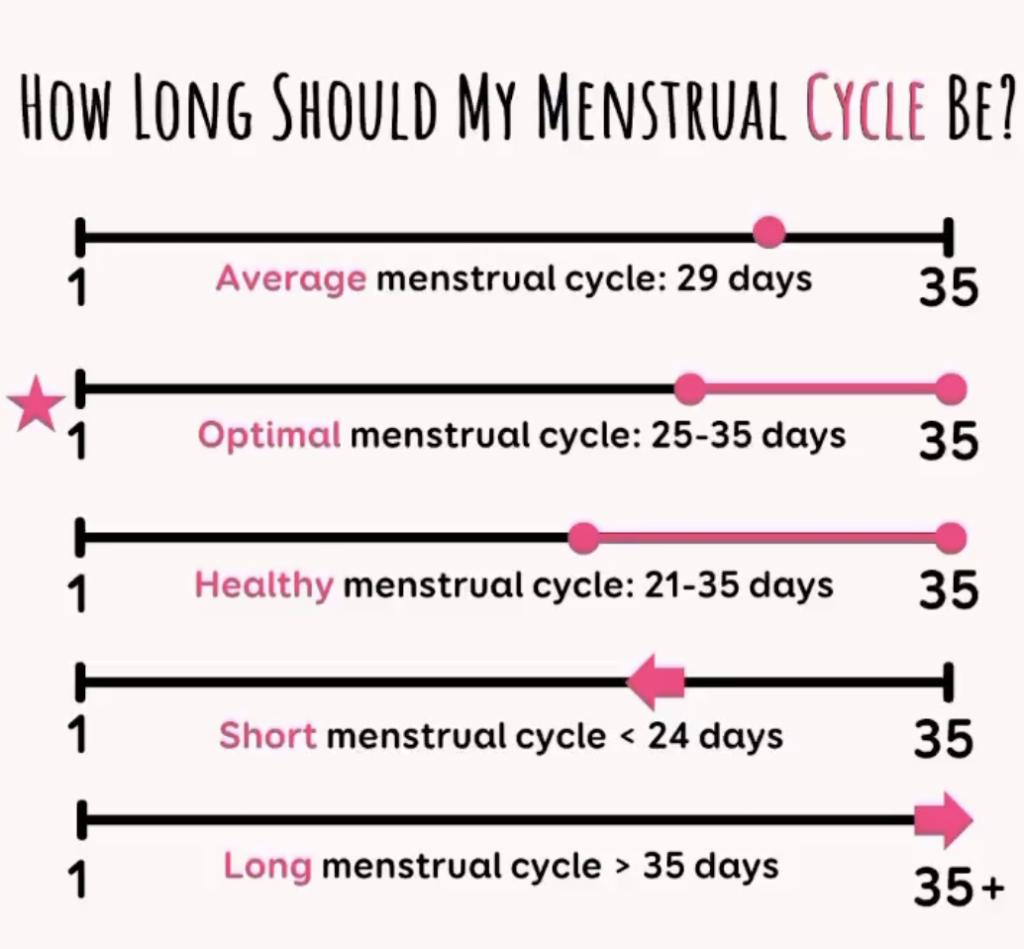
PART 3 – HOW LONG SHOULD MY MENSTRUAL CYCLE BE?
The length of your cycle is the number of days between periods, including the first day of your period until the day before your next period starts.
➡️➡️ Cycle length is determined by the day ovulation occurs, because the corpus luteum disintegrates causing the luteal phase to not last longer than 17 days.
The average length of a cycle is 29 days.
There is a persistent belief that each and every menstrual cycle should be 28 days long, with ovulation occurring on day 14.
❗Very few women have a consistent 28-day cycle.
Practitioners differ regarding what constitutes a normal menstrual cycle length, with studies showing that a healthy cycle can fall within the range of 21 to 35 days.
However, in my experience, a 25-35 day cycle is ideal for optimal hormone health and fertility. 👍
Women with cycles shorter than 24 days tend to have lower progesterone or excess estrogen and too short luteal phases, which can impair their ability to get pregnant.
So, while these shorter cycles might technically be considered “healthy,” remember that fertility and menstrual health are intricately tied together.
While pregnancy might not be your endgame, it is your body’s, and a truly healthy cycle is one that gives your body a chance to reach this goal.
👉Do you need a little help to figure out how to track your menstrual cycle? 📈
See chapter 1 in my book Fix Your Period.🩸
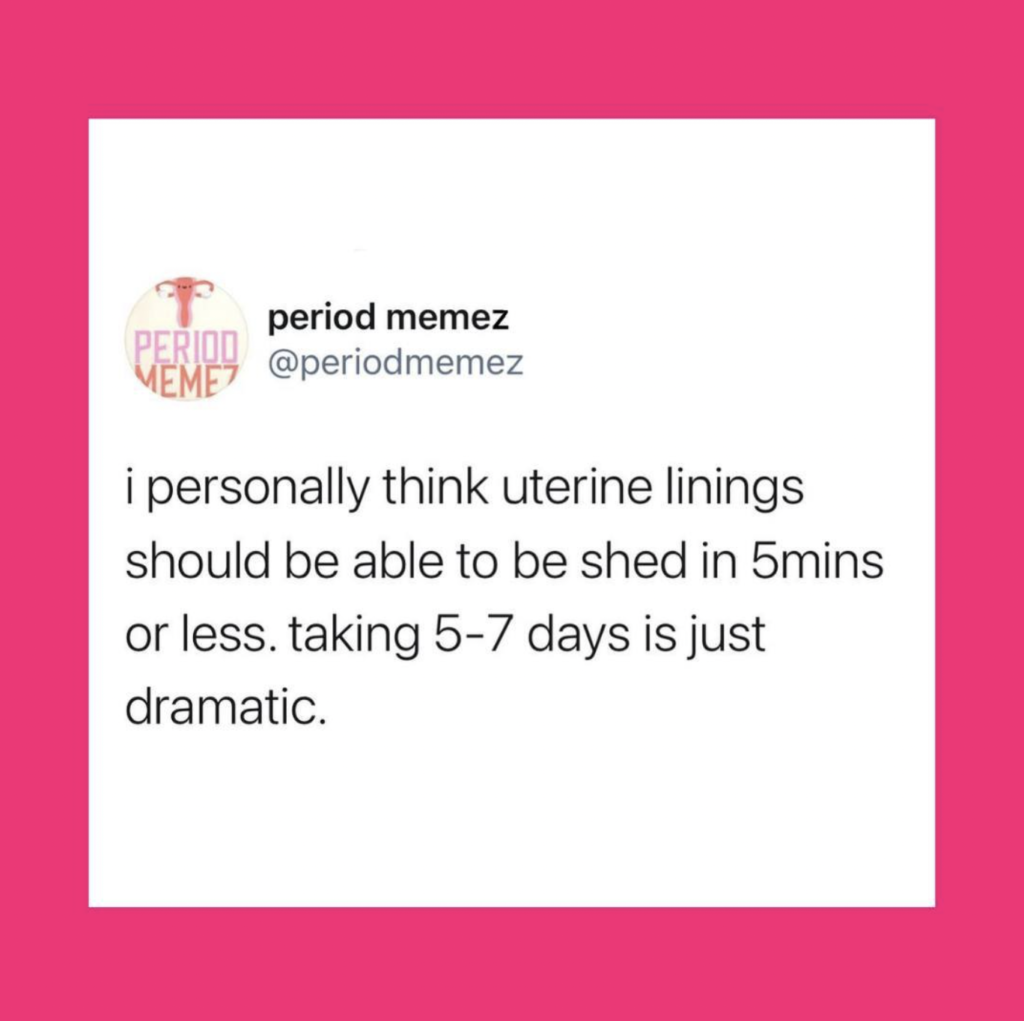
PART 4 – HOW LONG SHOULD MY PERIOD BE?
Before we get into it, people are often confused by the terms ‘period’ and ‘menstrual cycle’ so let’s clear that one up quickly. 🤔
🗓️ Your #menstrualcycle is the entire cycle, from day 1 of bleeding to the last day before your next bleed.
🩸 Your #period is vaginal bleeding that lasts roughly 3 to 7 days and occurs approximately every 25-35 days.
There is a LOT of debate about how long our periods should last.
In my experience, a normal period should range between 3 and 7 days, with 4 to 5 days being ideal for most people (and 5 days being the statistical average).
This signifies that you had adequate levels of #estrogen to sufficiently build up the uterine lining in the first half of your cycle prior to ovulation.
Two days or fewer often signifies insufficient estrogen to kick off #ovulation and maintain all the other functions in the body that are dependent on this critical hormone.
Low-estrogen symptoms include vaginal dryness, painful sex, low libido, joint pain, an inability to focus, crankiness, anxiety, sleep disruption, and night sweats. 😭
The full-body negative impact of a sex hormone deficit is why I like to see periods in my clients that last 3 or more days.
What if my period is less than 3 days?😱
If you have always had a 2-day period and you’re rockin’ 💃 life without any symptoms👆🏼, then you’re probably just fine and a 2-day period is likely the norm for your particular body and hormonal makeup.
On the other end of the spectrum, if your period lasts 8 days or longer, this is often a sign of ovulatory dysfunction, estrogen dominance (when estrogen is too high in relation to #progesterone), and/or low thyroid function.
We’ll get to that in an upcoming post!
Don’t forget to like, share (with the ladies in your life who need this!) and tell me below how long your period is…1️⃣ 2️⃣ 3️⃣ 4️⃣ 5️⃣ or ___ days!
P.S. there are protocols to support both long and short periods in my upcoming #FYPCollective membership! Sign up for the waitlist to be one of the first to join.
📸 @periodmemez
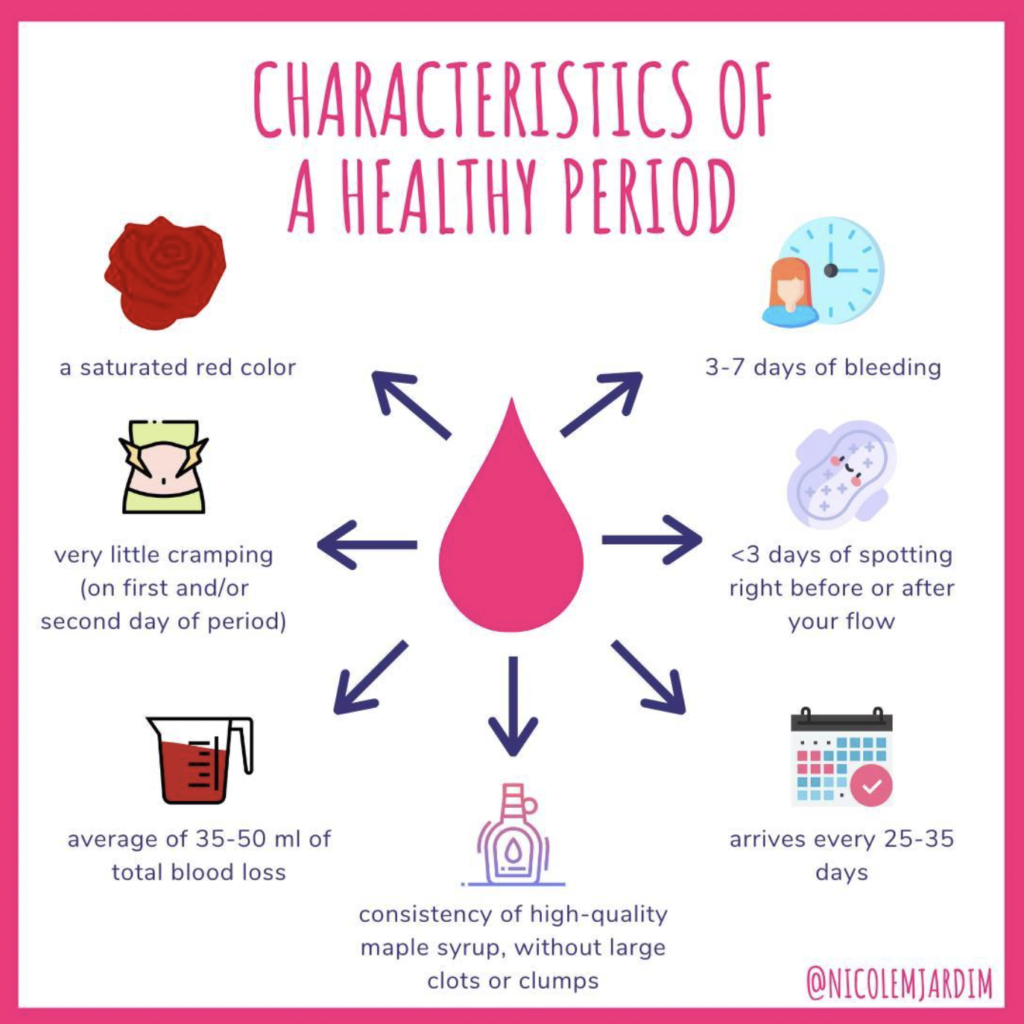
PART 5 – CHARACTERISTICS OF A HEALTHY PERIOD🩸
The next time you get your period, I want you to make a note (in an app) of what it looks like. 📒
For example:
⭐️ What color is it?
⭐️ How long does it last?
⭐️ Is there clotting?
⭐️ How heavy is the flow?
⭐️ What’s the consistency?
⭐️ Do you spot for any amount of time before or after?
Jot down your answers and refer back to this post (save it for future reference if you need to!).
Even though we’re all different, the truth is that there are specific characteristics that a healthy period should have.
For starters, our period should ideally start with a saturated red color.🩸
A relatively wide range of reds can be used to describe healthy menstrual blood—ruby, berry, cherry, currant, crimson, scarlet, and rose—so don’t worry if your blood isn’t fire-engine red. 🚒
The blood should have a consistency like high-quality maple syrup—that is, it should flow easily. 🍁
Period blood that is clotted or clumpy, looks like blueberry, raspberry, or blackberry jam, or that is pasty like mud could be indicative of estrogen dominance and/or progesterone deficiency.
On the other hand, period blood that is thinned out, too little, lighter in color, and pink rather than red (i.e., like watermelon juice or watered-down cranberry juice) could mean there is an estrogen deficiency or iron deficiency. 👎🏼
Not sure your period is up to par?
Click the link in my bio to take my period quiz and while you’re at it, sign up for the Fix Your Period Collective waitlist! Your personalized dashboard in the new membership will keep you on track for a healthy period. 🌟
Is your period outside the normal ranges?
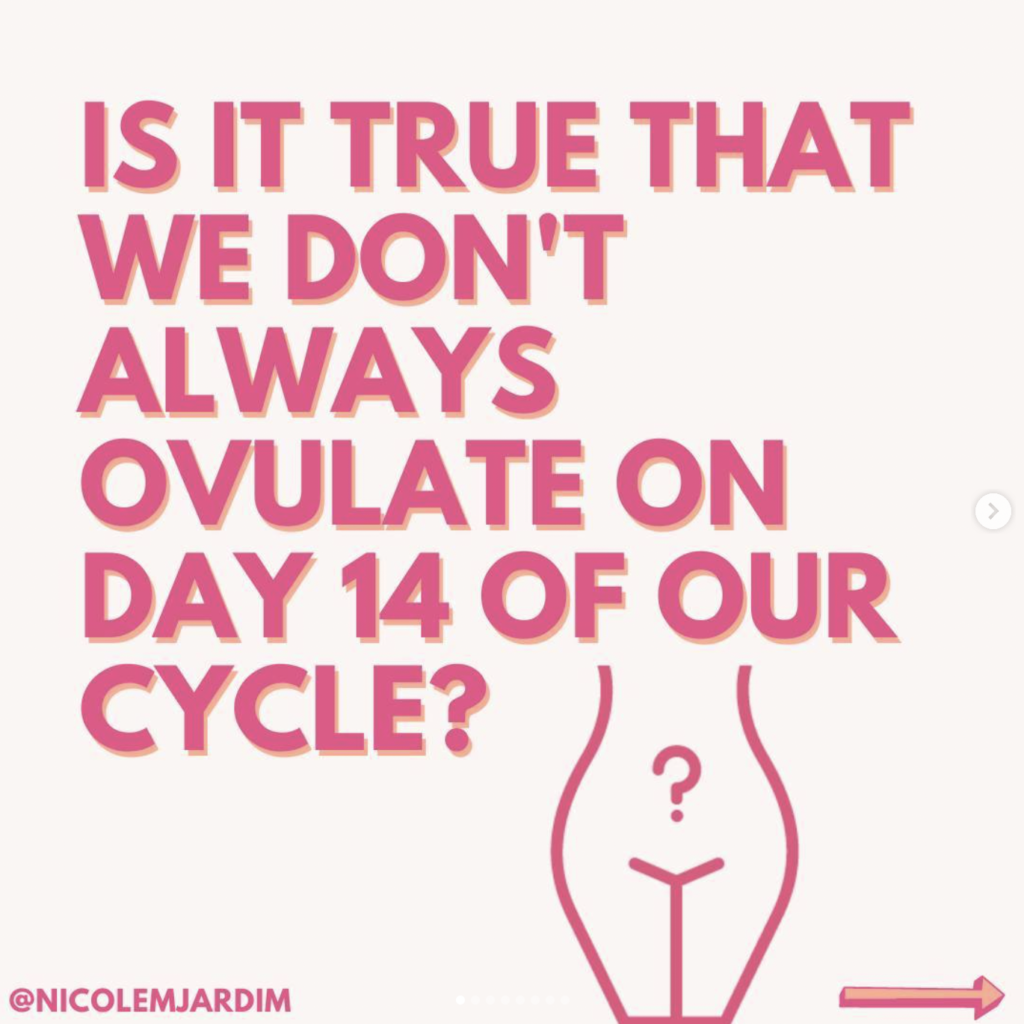
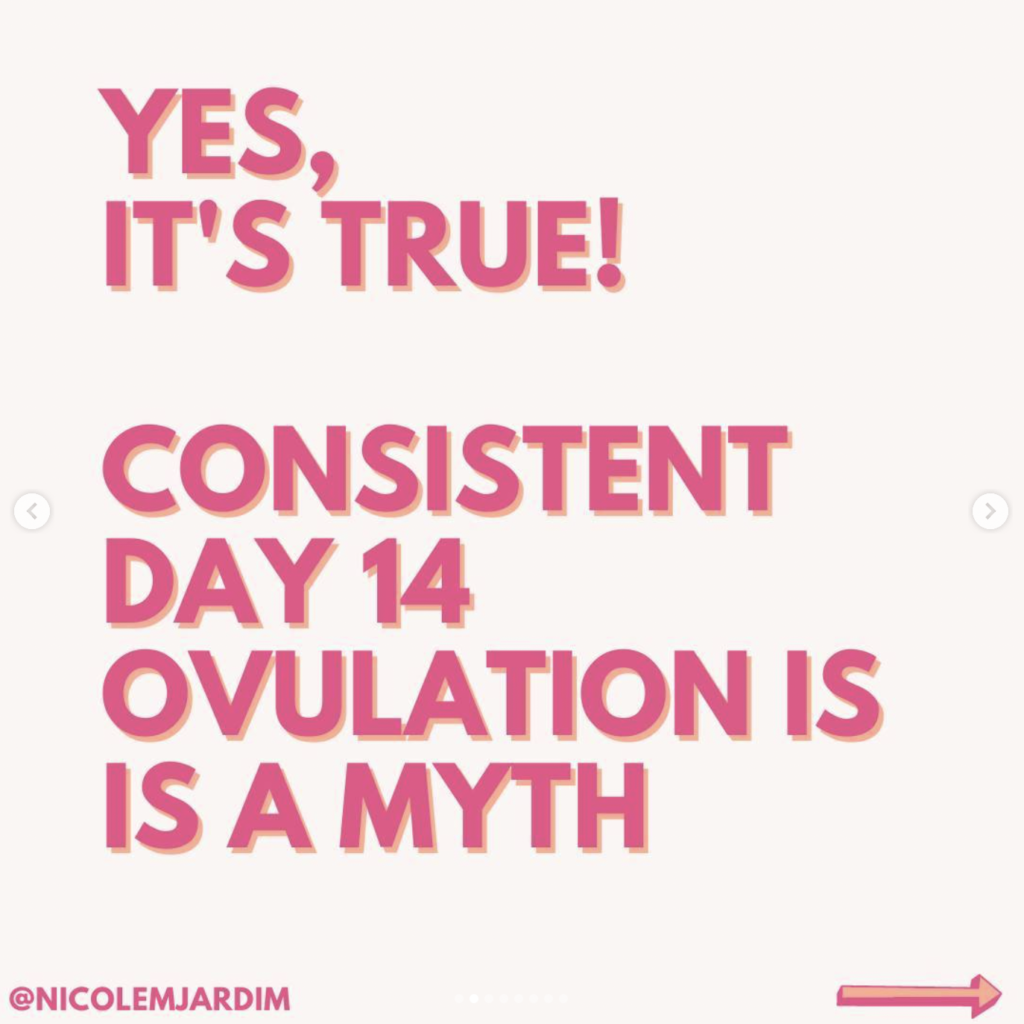
PART 6- SHOULD I OVULATE ON DAY 14 OF MY CYCLE?
🌸 Like, share and send to the people in your life who need this info!
There is a persistent belief that each and every menstrual cycle is 28 days long, with ovulation occurring on day 14.
A quick Google search for “How long should my menstrual cycle be?” will bring up dozens of results reinforcing this idea.
This is possibly due to the notion that before artificial light took over our world many women ovulated with the full moon 🌕 and menstruated on the new moon 🌑
FYI: the moon cycle is 29.5 days long.
Well, things have changed a fair bit since then. Nowadays, very few people have a consistent 28-day cycle.
And, if you think about it…
The rhythm method—a calendar-based 🗓️ method of birth control developed in the early 1900s, which asserts that menstrual cycles are 28 days long with ovulation occurring about 14 days before the next period—has contributed to this misconception (pardon the pun).😜
Additionally, the widespread use of the birth control pill since the 1960s, with its monthly dose of 28 neatly packaged pills to give you that “perfect” 28-day cycle and 5 to 7 days of bleeding, is likely skewing the data.
Whatever the reason, the myth of a 28-day cycle with ovulation occurring precisely on day 14 is just that, a myth.
🥚Ovulation actually changes from cycle to cycle and this fluctuation depends on a variety of factors, which you’ll find in my book Fix Your Period.
I like to see ovulation occur between days 12 and 21 in my clients’ cycles. That means that an ideal follicular phase is at least 11 days long and a luteal phase is between 11-17 days.
What cycle day do you usually ovulate on?
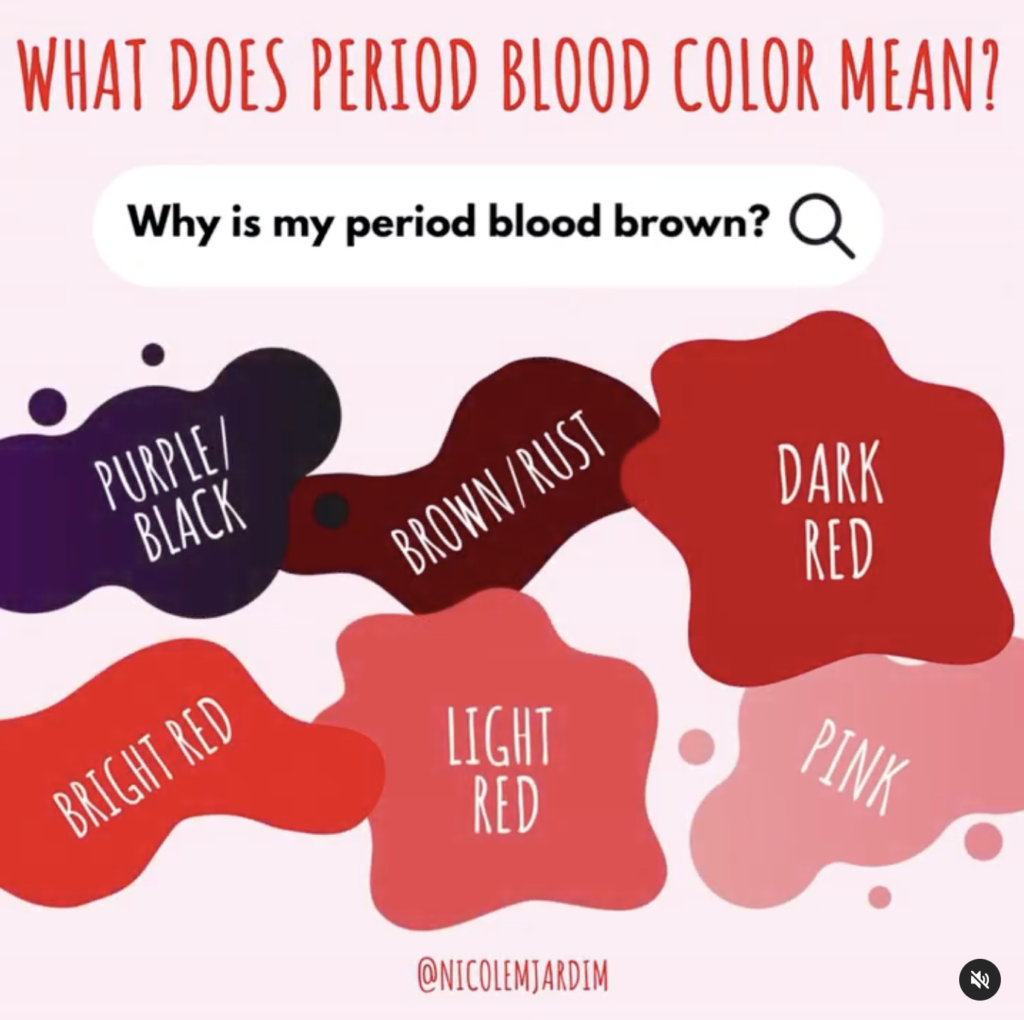
PART 7 – WHAT SHOULD MY PERIOD LOOK LIKE?
Menstrual fluid consists of sloughed-off endometrial tissue, red blood cells, and other fluids.
A relatively wide range of reds can be used to describe healthy menstrual blood.
These include ruby, berry, cherry, currant, crimson, scarlet, and rose, so don’t worry if your blood isn’t fire-engine red.
(This is reminding me of those swatches you stare at for hours when trying to decide on a new paint color for your house.) 🎨 😅
Ideally, your period should start with a saturated red color (see above).🩸
✔️Brown/purple or very dark =
A sign of slower-moving blood at the beginning or end of your cycle. Slow-moving blood is exposed to more oxygen, and oxidized blood is darker.
This could also indicate your uterus may be in a flexed or tipped position, making it harder for it to expel all the blood. You may even see brown blood or spotting from a previous cycle! 😲
This may be accompanied by pelvic pain, cramps, constipation, and low-back pain during your period.
It may also signify that estrogen is too high in relation to progesterone, since progesterone thins the uterine lining and estrogen builds it up.
✔️Pink or very light color =
Period blood that is thinned out, too little, lighter in color, and pink rather than red (i.e., like watered-down cranberry juice) could mean that blood is mixed with cervical fluid.
Or it could mean there is an estrogen deficiency or iron deficiency, and the uterine lining is not building up sufficiently.
It could also signify that ovulation isn’t occurring – consistent ovulation is the driver for sufficient estrogen and progesterone levels.
Questions about your period blood color? Hit me up below! I can’t give personal advice tho.
What to do next?
📝 Take my Period Quiz!
📖 Grab my book Fix Your Period-chapters 2-3.
🩸 Sign up for the FYP Collective Membership Waitlist.
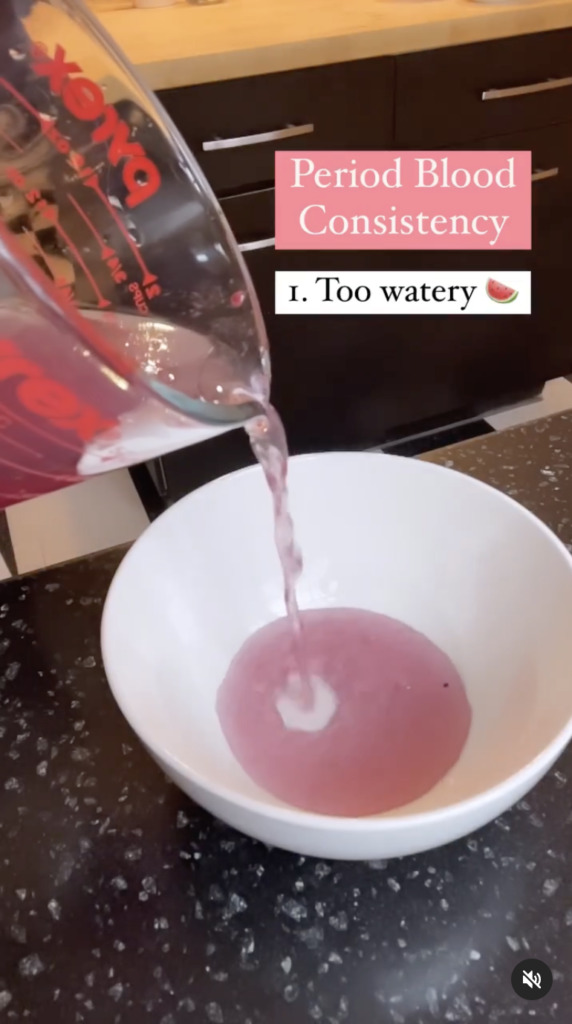
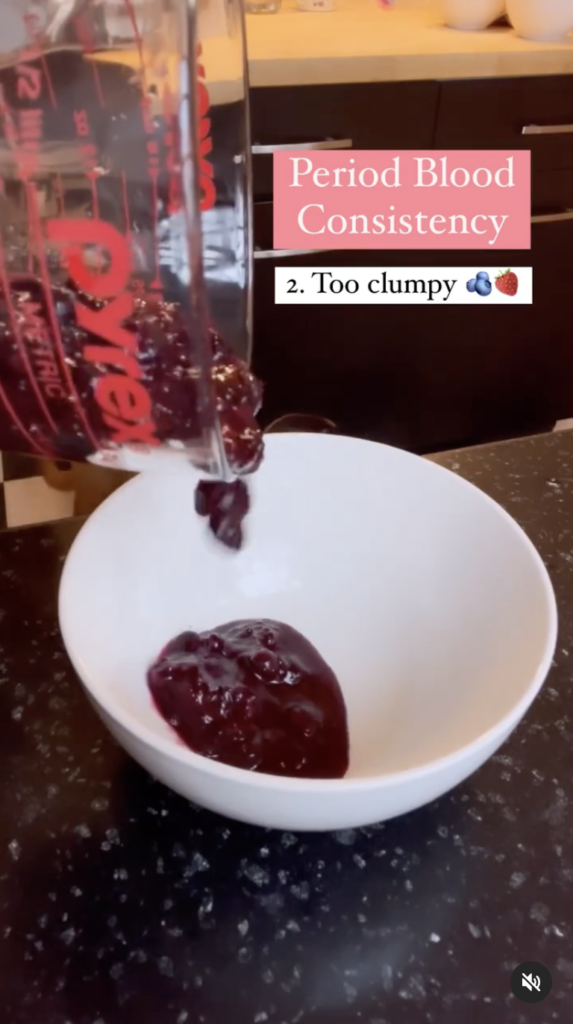
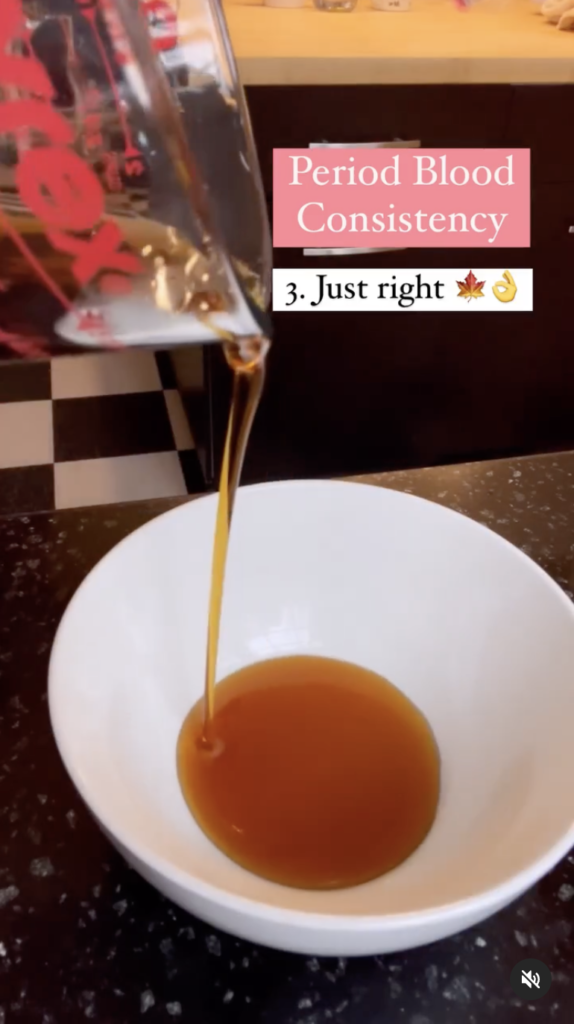
The endometrium is V sensitive to ovarian hormones: estrogen and progesterone & they exert their effects on the uterine lining throughout the menstrual cycle.
I like to refer to estrogen as the builder hormone 🏗️, coming in and constructing the house and then progesterone as the interior decorator hormone, who comes and makes the house all pretty and gets it ready for its new resident! 🏠🪄
Menstrual fluid consists of
❣️ Sloughed-off endometrial tissue
❣️ Blood
❣️ Vaginal and cervical fluids.
How should period blood flow?
⭐ Periods should have a consistency similar to high-quality maple syrup—it should flow easily & consistently. Not too watery + not too thick. ⭐
Period blood that is clotted, clumpy, looks like some kind of jam, or that’s pasty like mud could be indicative of a few things:
1️⃣ Lack of adequate blood flow to the pelvic region-
This is problematic and why pelvic therapies like pelvic PT, Mercier technique and Arvigo/Maya massage can be really helpful for blood flow.
I’ve seen these therapies change blood flow from dark brown, pasty and clumpy, to a nice red flow!
2️⃣ Estrogen dominance / progesterone deficiency-
Estrogen builds up the uterine lining and then progesterone comes in and preps the lining to receive a fertilized egg. Too much E causes the lining to thicken. P’s job is to reduce the effect of estrogen on the lining, so too little progesterone can be problematic.
The deal with clots:
Not normal: Blood clots bigger than an inch that present consistently in period blood.
Normal: A few clots (that are less than an inch long) here or there in period blood that flows.
BTW, the build up + breakdown of the uterine lining is known as the *uterine cycle* and it falls under the entire menstrual cycle umbrella. 🩸
On the flip side of clotted/clumpy:
Period blood that is thinned out, too little, lighter in color, and pink rather than red (like watermelon juice or watered-down cran juice) could mean there is an iron deficiency, estrogen deficiency or anovulation.
What’s your period flow like? Drop a 🍁for maple syrup, a 🍉 for watery or a 🍓 for jam-like / clotted/clumpy.
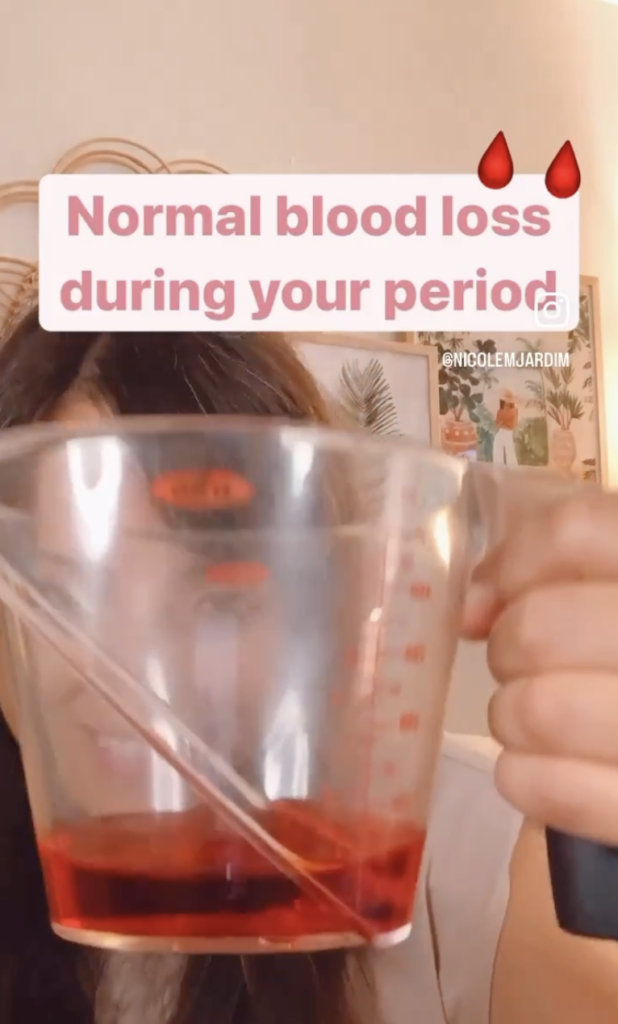
PART 9 – Blood Loss during your period
Normal periods consist of an average blood loss of 60 ml or less with an average range of 35 to 50 ml, although the range can be MUCH wider.🩸
Not sure what that looks like?
Pour 60 ml of water into a measuring cup to get an idea!
Each soaked regular pad or tampon holds roughly 5 ml (or 1 teaspoon) of blood, so it’s considered normal to soak about six to ten pads and/or tampons during each period.
Menstrual cups and period panties have varying capacities. Check your brands for more info.
👉🏽 Here’s what’s considered normal for an entire period:
✔️ The number of fully soaked regular pads or tampons is about 6-10.
✔️ You’ve fully soaked about 6 pairs of “regular flow” period underwear
✔️ You’ve filled a 20 ml menstrual cup about 3 times or half filled it about 6 times during your period.
NOTE: Most of us don’t wait until our pad or tampon is fully soaked and different brands have varying absorbencies, so if this number seems low to you, it may be because of the brand you use or because you change your pads or tampons more often.
Also, measuring menstrual blood loss is tricky and has limitations. 🤔
This is because, in addition to blood, you’re also expelling uterine tissue, clots, and other fluids, so in terms of menstrual fluid volume, according to the research, you’re potentially losing more than I’ve described.
Like, comment, save and share this post! Got Q’s about your flow? Ask below…
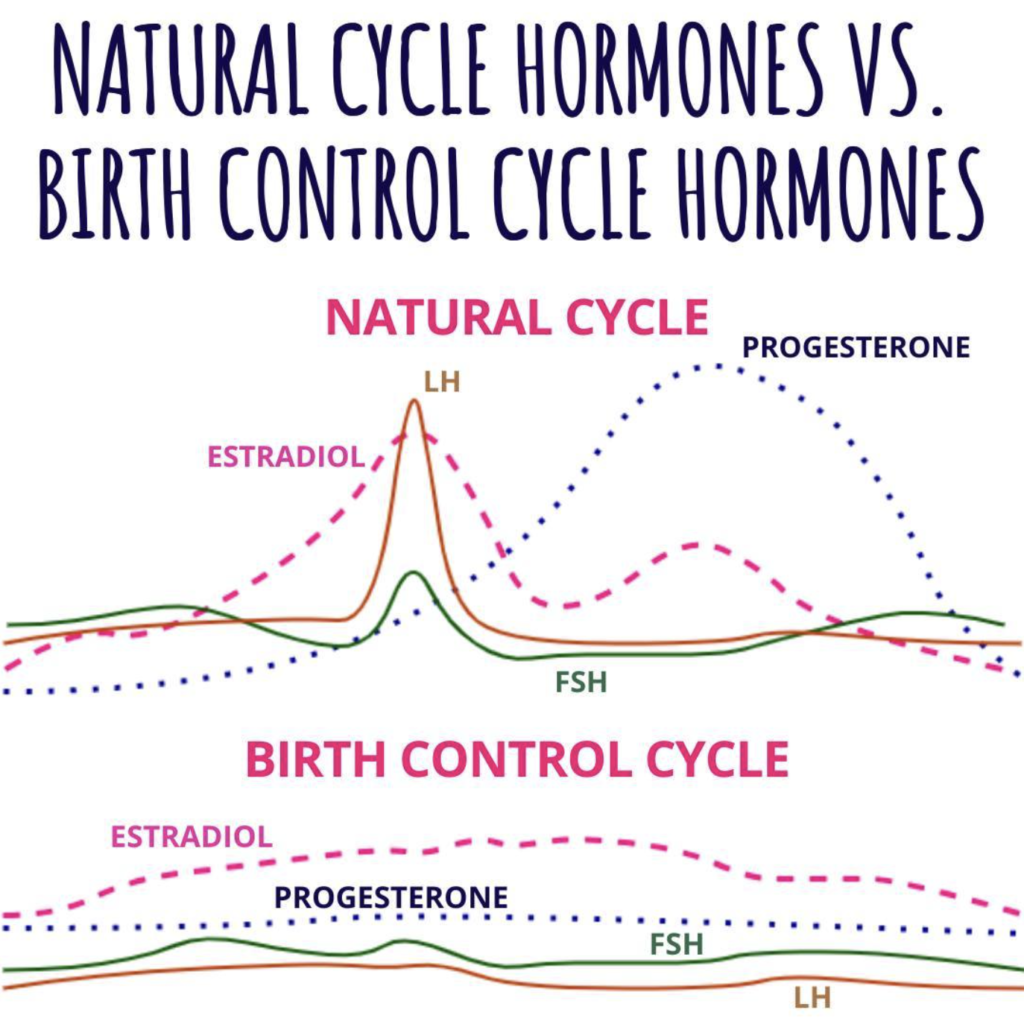
PART 10 – NATURAL CYCLES VS. BIRTH CONTROL CYCLES
There is a lack of understanding and a ton of misinformation surrounding this topic, so I think it’s important to share the difference between a natural cycle and a birth control cycle.
➡️ First, you are not ovulating on hormonal birth control. That is the mechanism by which it prevents pregnancy! 🤨
The only exception is the Mirena IUD (the progestin IUD) which thins the uterine lining so much it stops a period in many cases. But it does stop ovulation for a number of people tho, so chart your temperature to find out!
🥚Ovulation is the driver for all of these hormone fluctuations (top image).
No ovulation, no hormone fluctuations (bottom image). And most importantly, no progesterone production. (Reminder: hormonal bc does not balance hormones/regulate your cycle – it turns it off).
Progesterone is responsible for ALL kinds of wonderful health benefits (see previous posts in the last two weeks).
Estradiol (our dominant estrogen during cycling years) is also responsible for many aspects of our health, so when it’s not rising due to ovulation, we’re missing out big time!
➡️ Second, a period is always preceded by ovulation. A period on the pill is known as a hormone withdrawal bleed or a pill bleed.
So the question last week about whether you need a period or not is only applicable to you if you are NOT on hormonal birth control/not suppressing ovulation & having natural cycles.
Otherwise, it doesn’t matter because you’re not ovulating or getting a real period anyway.
Hope this image is helpful and clears up some of the confusion! ☺️
If you want more info, see chapters 1-2 in my book Fix Your Period or module 1 in my Harness Your Hormones Program.
Need help transitioning off of BC? There will be an entire protocol dedicated to this in my upcoming membership (waitlist link in bio!)
In the meantime, find everything you need at nicolejardim.com/programs
Are you on birth control or do you have a natural cycle?
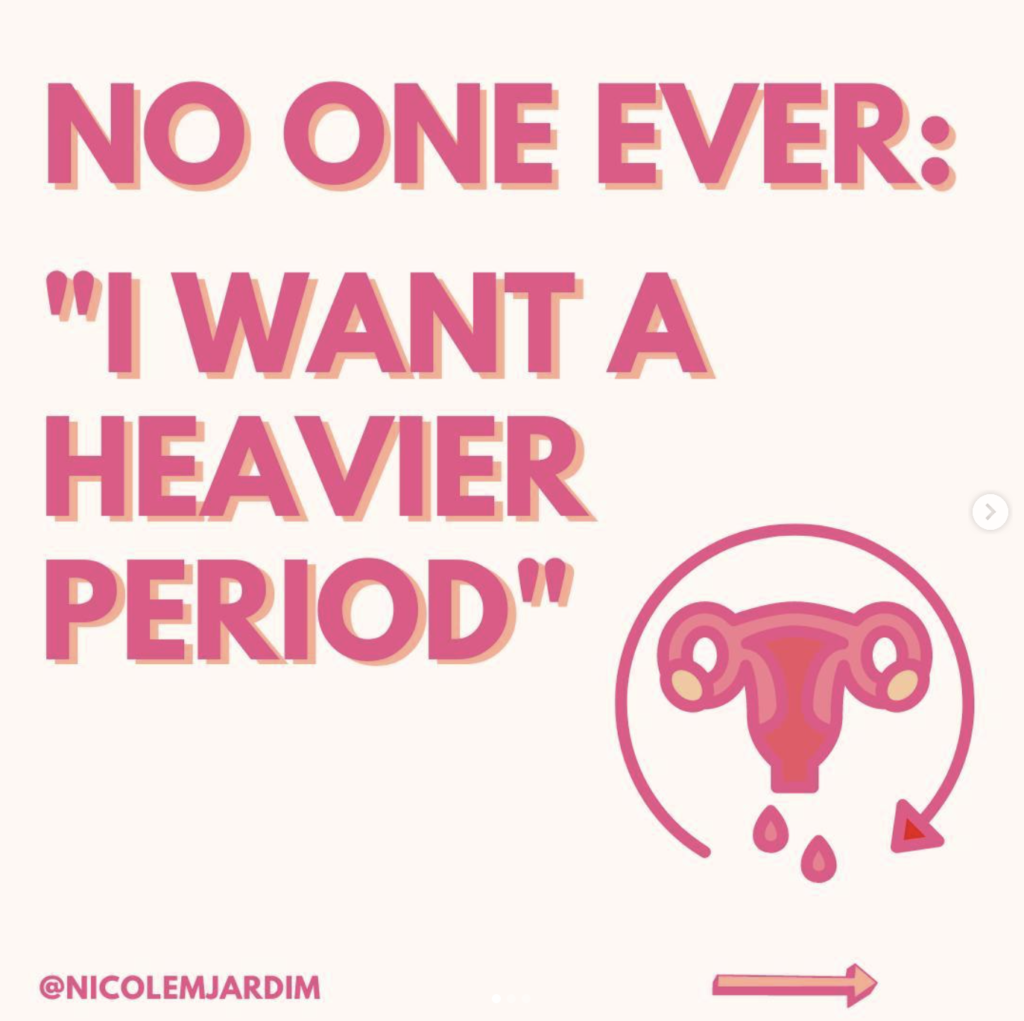
PART 11 – IS MY PERIOD TOO LIGHT?🩸
While this may seem welcome to some—“I want a heavier period,” said basically no one ever—a light or short period can be a problem, too.
There is a very wide range when it comes to blood loss, but in my experience, I consider a light period to be typically 25 ml or less with only 1 to 2 days of bleeding.
In more practical terms…
👉🏽 During the span of a light period you might use five regular tampons/pads or fewer.
👉🏽 If you use a menstrual cup, depending on which one you use— they range in capacity from around 15 ml to 40 ml—you’ll probably fill it only once.
👉🏽 You might also notice your blood doesn’t really flow consistently and instead seems more erratic, kind of like spotting.
👉🏽 In terms of color, it may be watery and light red or pink or brown, rather than a vibrant, solid red.
PLEASE READ: It’s helpful to know that if you’ve always had periods on the lighter side and you’re not experiencing any other period-related symptoms such as:
✔️ Lack of ovulation
✔️ Short luteal phase, or
✔️ Problems related to estrogen deficiency (e.g., low mood, anxiety, vaginal dryness, painful sex, urinary tract or vaginal infections, and decreased ability to handle stress)
…then don’t panic. This might be your normal and you may be just fine.
❓❓What questions do you have about light periods?
What to do next?
🩸 Take my Period Quiz!
🔗 Grab my book Fix Your Period-chapters 1-3.
P.S. My new membership The Fix Your Period Collective is coming oh so soon, and it’s gonna blow your socks off! Get on the waitlist at the link in bio 😊😊
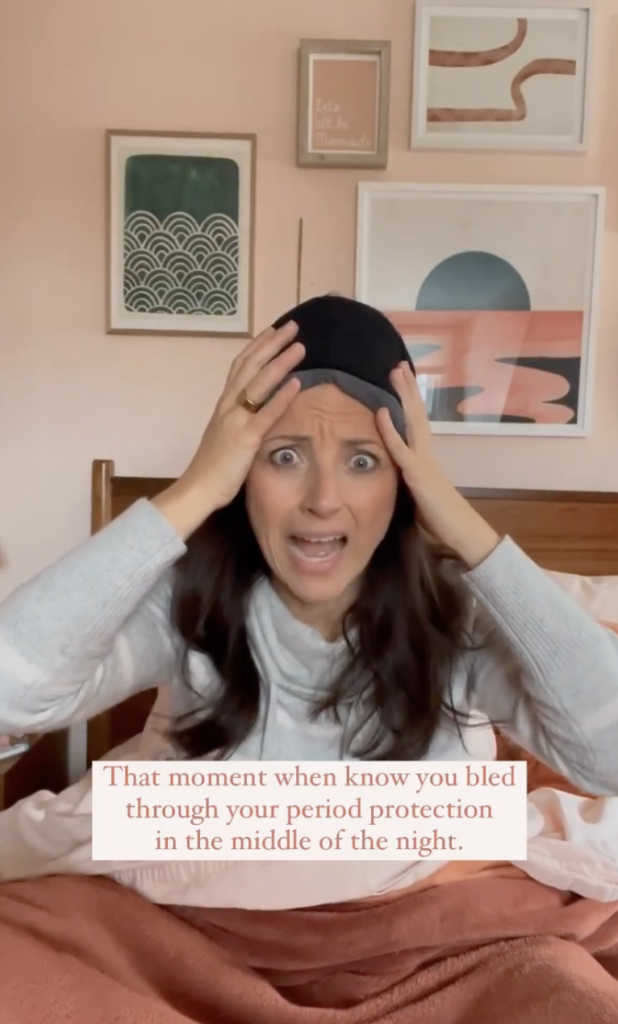
PART 12 – DO I HAVE A HEAVY PERIOD?🩸🩸🩸🩸
Tbh this doesn’t happen to me, but it’s verrry common!
If you’re losing more than 80 ml of blood per cycle OR you’re soaking more than sixteen regular tampons or pads per cycle, then this is a sign of #menorrhagia, or an excessively #heavyflow.
Other signs:
✔️ #Periods that last longer than 8 days
✔️ Flooding (when you’re literally bleeding through pads/tampons every thirty to sixty minutes)
✔️ Clots that are an inch long or bigger
✔️ You have to change your period protection during the night
✔️ Needing to double up on period protection
✔️ You have iron deficiency anemia and/or your period wipes you out
One fully soaked regular tampon or pad holds approximately 5 ml, or 1 tsp, of blood.
One fully soaked super tampon holds 10 ml.
A half-soaked regular pad or tampon equals 2.5 ml, and a half-soaked super tampon equals 5 ml.
🩸Determine if you have a heavy flow…
Make a note in your period-tracking app or in the Notes app on your phone every time you change your period protection.
Note how soaked/full your period protection is to determine if you have a heavy period.
👉🏽 You likely have a heavier-than-normal flow if:
✔️ The number of fully soaked regular pads or tampons is higher than sixteen.
✔️ You’ve fully soaked “regular flow” period underwear four or more times a day on at least 3 days of your period
✔️ You’ve changed a half-full 30 ml menstrual cup more than six times during your period.
Only you can know what’s normal for your unique body, but if you’re consistently experiencing any of the signs of a heavier-than-average period it’s time to speak to your gynecologist.
❗PS. If your flow is on the heavy side, weeks 4 & 6 in my book Fix Your Period will be particularly important for you.
The focus of these weeks is liver detoxification & thyroid support, which are both linked to runaway estrogen levels and heavy periods. Link in bio @nicolemjardim
Oh, and don’t forget to sign up for the FYP Collective waitlist to be the 1st in the doors and get access to your personalized heavy period solutions.
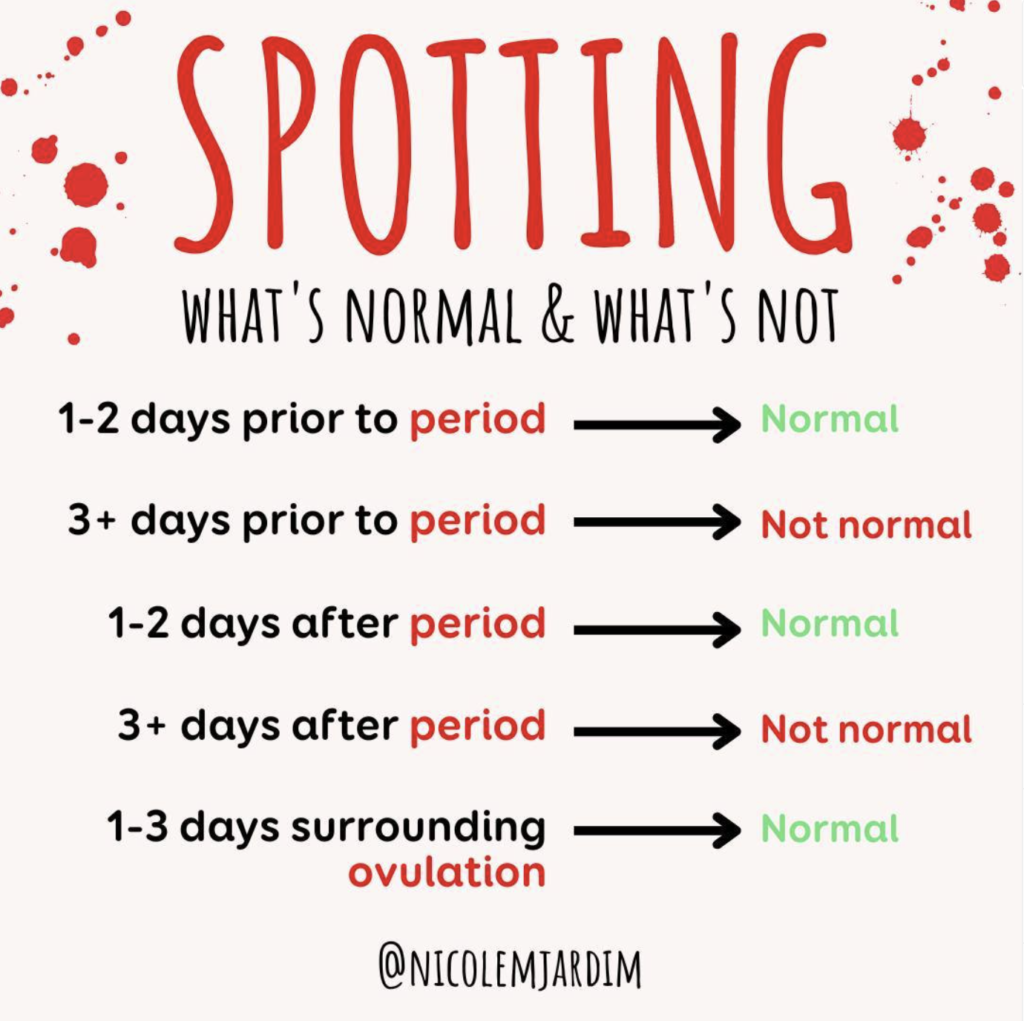
PART 13 – SPOTTING BEFORE OR AFTER MY PERIOD
For many of us, our periods begin with spotting🩸
But it’s important to know that there are different types of spotting—some are okay, some are not so great.
Note that if you’re in the “not normal” category, this doesn’t mean you’re broken or there is necessarily something wrong with you! It is just one sign that something might be up.
FYI: Spotting is not considered your period, and if you’re tracking your cycle, spotting should not be counted as the beginning of menstruation.
Pre-menstrual spotting for 1 to 2 days before your period begins is usually no big deal.
This blood is often darker red/brown because it is slow moving or is leftover blood from the previous cycle.
However, spotting for more than 3 days leading up to your period is not considered normal.
It is often a sign of:
☑️ Progesterone not rising high enough
☑️ Progesterone dropping too quickly
☑️ Conditions like endometriosis, adenomyosis, uterine fibroids, or hypothyroidism
☑️ A flexed or tipped uterus
☑️ Cervical inflammation caused by an infection
When your period ends, bleeding should taper off over a day or two rather than spotting that lingers for 3 or more days. The latter could also be indicative of the last three conditions I just mentioned.
OVULATORY SPOTTING
Spotting around ovulation is also quite common, and in most cases it’s considered normal and a sign of ovulation.
It usually lasts for around 1-3 days and shows up in your fertile-quality cervical fluid as bright red, light red, or pink. This spotting occurs as estrogen levels drop right before ovulation, causing a slight partial shedding of the uterine lining.
Now what?
🗒️ Read my blog post “Help! Why am I spotting?”
🩸 Take my Period Quiz
🧪 Test your progesterone with a Test Kit from @LetsGetChecked using PERIOD25 for 25% off.
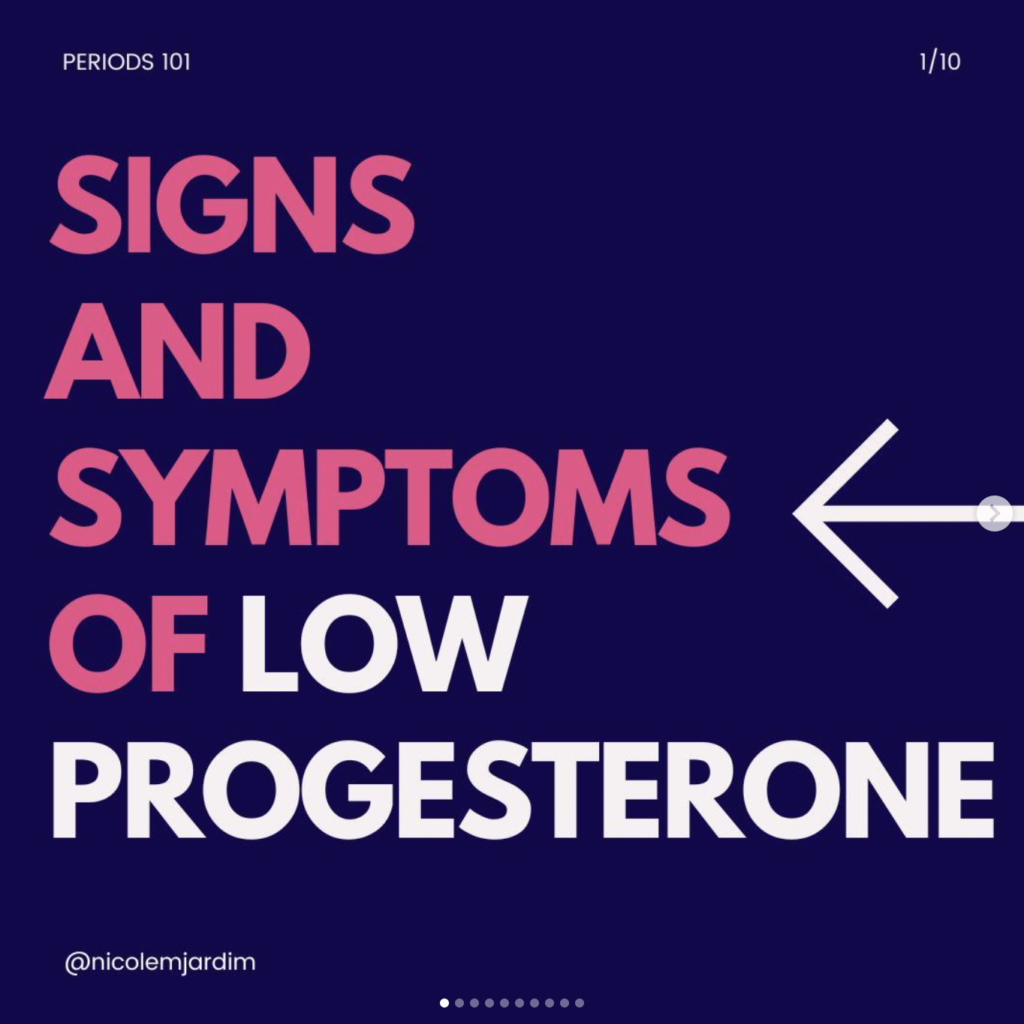
PART 14 – Signs & Symptoms of Low Progesterone
#Progesterone is one of your key sex hormones that supports:
⭐ Brain health
⭐ Quality sleep
⭐ Bone density
⭐ Heart health
⭐ Breast & uterine health
⭐ Vaginal health
⭐ Skin & hair health
And more
This hormone is secreted by the luteinized granulosa cells on the ovary just before ovulation. Then, once an egg is released, the egg’s follicle transforms into the corpus luteum, or “yellow body” (I did a whole post on this, scroll back!), which starts pumping out progesterone.
*If you aren’t OVULATING you won’t have adequate levels of progesterone in the body* aka #lowprogesterone
Yes, It is also possible to ovulate and still have low progesterone, depending on the quality of ovulation / health of the corpus luteum.
The length of the luteal phase (second half of your cycle) depends on how long the corpus luteum maintains progesterone production. If it’s 9 days or shorter, this is called luteal phase deficiency and progesterone levels will be lower.
What does low progesterone look like? Swipe above to see.
The most common reason that progesterone levels fall? Stress, babe. Ongoing, unmitigated psychological or physical stress that results in high levels of cortisol production and low DHEA production.
I’m excited to share my new stress protocol and more progesterone supporting tips in the new membership. Sign up for the FYP Collective waitlist at the link in bio!
Oh! And stay tuned tomorrow for progesterone testing tips.
How many of these low progesterone symptoms do you have, if any?
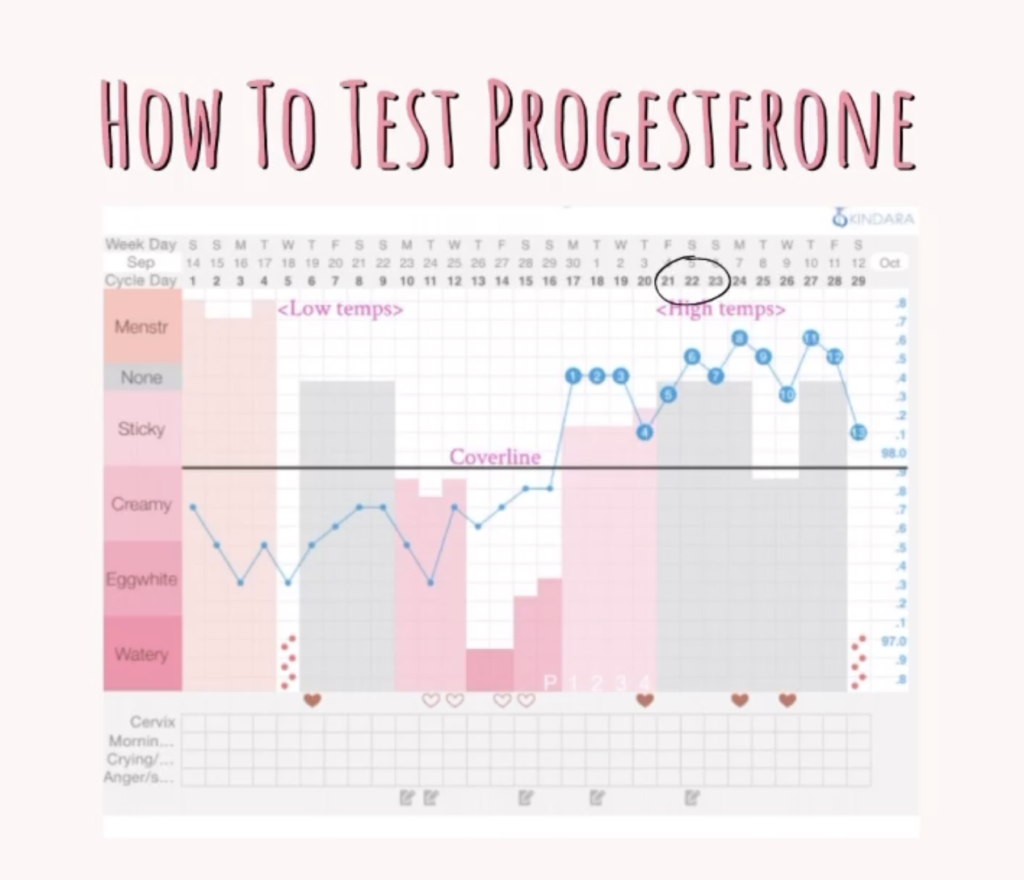
PART 15 – TESTING PROGESTERONE
Let’s talk about when & how to test progesterone👇🏼
Believe it or not, no one has a cookie-cutter menstrual cycle 🍪 So knowing when to test your progesterone levels can be tricky.
You may have heard that the best time to test progesterone is on day 21 of your cycle. This is based on ovulation happening on day 14 of your cycle and then testing 7 days after ovulation.
But this time frame won’t work for everyone. Yup, it’s #fakenews.
Progesterone only rises after you’ve already ovulated, which means that if you test too early (pre-ovulation), the results will not be an accurate representation of what’s happening with your hormones.
I don’t want to sound preachy but I see this all.the.time!
So here’s the question. “When exactly should I test my progesterone?”
Well, first go back to your period tracker and check your temperatures (and cervical fluid patterns if you’re tracking those) to determine when you had the “Big O”.
Progesterone should be tested 5-7 days after ovulation day. If you ovulated on day 16, you’d want to test on days 21, 22, or 23.
If you don’t know when you ovulated, and you have a regular period (it comes every 25-35 days consistently), check your period tracker and count back 7 days from when your period is due.🩸
If your period is irregular, I highly recommend you track your temperature to get a more accurate idea of when you ovulated so you test on the right day.
Getting this data is SO important if you want to tackle period problems like #PMS, heavy periods and spotting, just to name a few.
Have you tested your progesterone on the wrong day only to find out afterwards?!
Still have questions? Be sure to check out my Hormone Testing Cheat Sheet – an 18-page guide that takes ALL the guesswork out of testing! Linked in my bio.
P.S. this will be part of my new membership, the Fix Your Period Collective, coming soon!
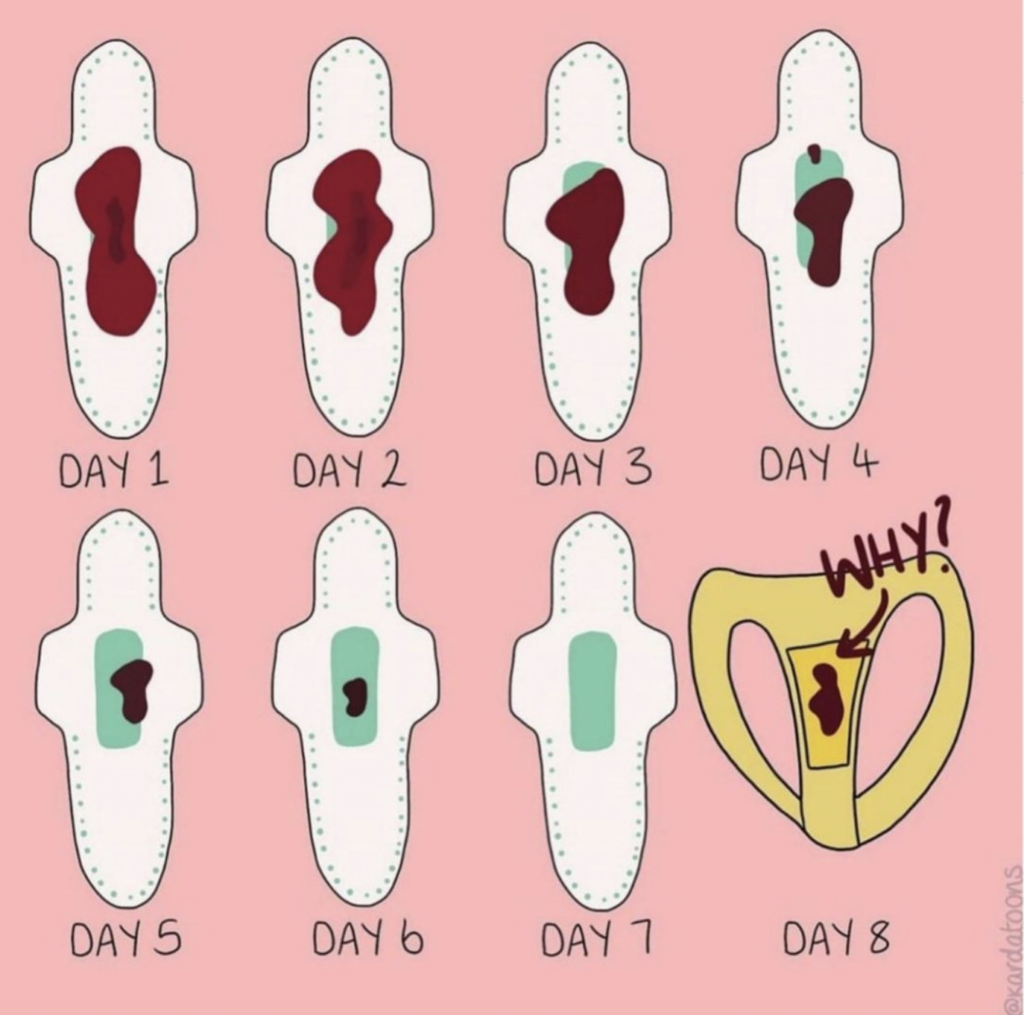
PART 16 – WHAT’S THE TYPICAL PATTERN OF BLEEDING?
The first day of your period is not spotting.
The first day of your flow is when you experience significant bleeding and need a pad, tampon, period underwear, a menstrual cup, or some other form of period protection.
A period typically starts out heavier and then moves to medium and then light before ending.
But we’re all unique, so some women experience periods that start out lighter, become heavier, and then become lighter again.
In others, the flow is consistent every day of the period and then abruptly ends or tapers off with some spotting.
Each of these scenarios is considered healthy and nothing to worry about.
When it comes to the pattern of bleeding, start-and-stop periods are probably the biggest concern for most people.
Their periods are like evening traffic on the highway🚦… starting and then suddenly coming to a screeching halt around day 3 or 4 and then starting up again twenty-four hours later.
There are a number of possible reasons for this:
☑️ Too-high estrogen
☑️ Progesterone not dropping uniformly once your period begins
☑️ The position of the uterus and how the uterine muscles are contracting
WHAT TO DO ABOUT IT?
➡️ Start with the basics if you haven’t already. Feed your hormones with the right nutrients. You can do that with my Harness Your Hormones Program. Link in bio.
➡️ Work with a pelvic physical therapist to address any structural issues.

PART 17 – Once you’ve ovulated, It’s impossible NOT to have a period!
That’s right.
But Nicole, my app told me I did ovulate, that was 3 weeks ago and I’m still waiting on my period.
Sorry, nope! You didn’t ovulate (yet).
EDIT: unless you are pregnant. Saying this for everyone who is commenting that pregnancy is the other way you don’t get a period if you have ovulated.
Swipe through above to get the breakdown on this process.
I hope you enjoyed my Periods 101 series! Scroll back for lots of juicy info if you missed it!
Questions? Lmk in the comments 👇
